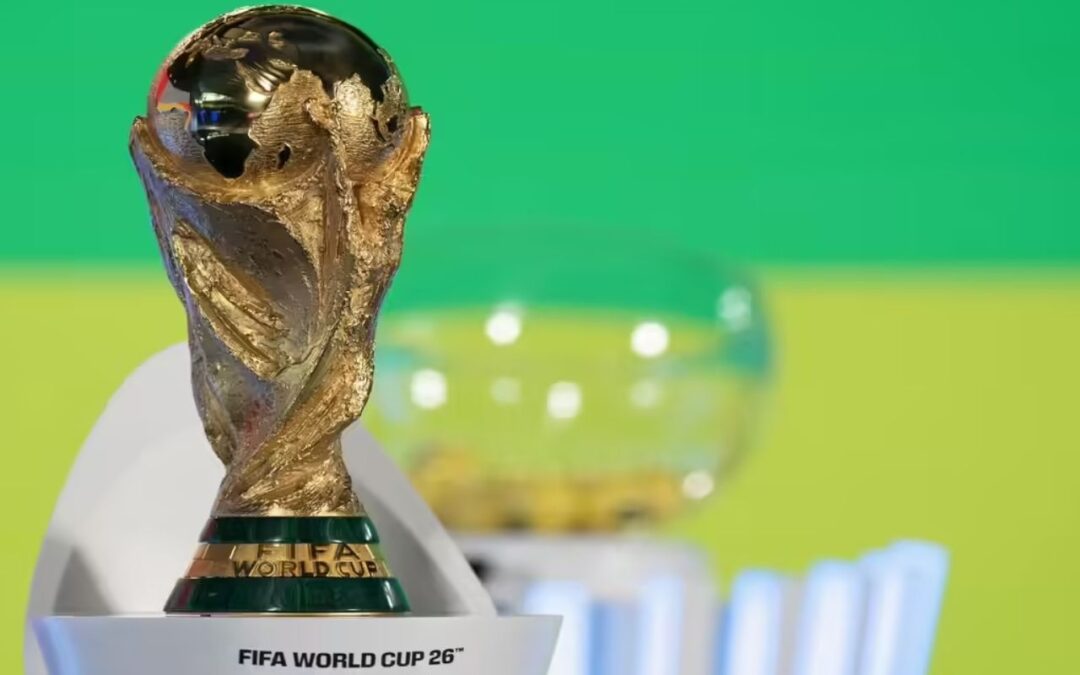The 2026 FIFA World Cup will be the biggest ever. For the first time, 48 teams will play, and FIFA has created a new draw system to make the tournament smoother, fairer, and more fun.
One important change is that the top four teams will be placed in different parts of the draw so they can only meet in the semi-finals or the final, setting up big, exciting matches at the end. This system is designed to help the tournament flow better in its new format while keeping fans engaged from start to finish.
A New 48-Team Format
The 2026 World Cup, jointly hosted by the United States, Canada, and Mexico, will feature 12 groups of four teams each.
- The top two teams from every group will qualify for the knockouts.
- They will be joined by the eight best third-placed teams, forming the Round of 32. From there, the tournament will follow a straight knockout path.
This format increases the number of matches and gives many more nations the chance to play at the World Cup.
How the Seeding Works
Before the draw, the 48 teams are divided into four pots based on the FIFA World Rankings:
Pot 1: The three host nations (United States, Mexico and Canada) + the next nine highest-ranked teams.
Pots 2, 3, and 4: The rest of the qualified teams are placed into pots based on their FIFA rankings. The next 12 highest-ranked teams go into Pot 2, the following 12 teams go into Pot 3, and the last 12 teams are put into Pot 4.
Pot 4 also includes the playoff winners, whose names will be confirmed close to the tournament. Each World Cup group will have one team from each pot, keeping the groups balanced.
The Key Change: Top 4 Seeds Kept Apart
The biggest change to the draw rules is the separation of the top four teams in the rankings. FIFA will place these teams in different parts of the knockout bracket so they cannot meet before the semi-finals (as long as they win their groups).
This system follows three ideas
1. Two highest-ranked teams placed on opposite sides of the bracket.
2. Ranked teams 3 and 4 also placed on opposite sides but different from the top two.
3. This ensures that all four top seeds are in four separate quarters of the draw.
This setup is similar to how major tennis tournaments separate top seeds to ensure big finals and semi-finals.
Why FIFA Made This Change
With the expanded format, there is a risk that top teams could meet too early. If two or more strong teams ended up in the same path, blockbuster matches could happen in the Round of 16 or quarter-finals, leaving the final stages less appealing.
Also read: FIFA World Cup 2026: Full List of Teams Qualified So Far ft. France
FIFA wants:
- Big teams to stay alive longer, if they perform well.
- High-quality semi-finals that attract global attention.
- More balanced groups, reducing chances of “groups of death.”
This system does not promise that the top teams will reach the semi-finals because football is full of surprises. But it does make sure the draw does not make big teams face each other too early.
How the Draw Ceremony Will Work
The draw for the 2026 World Cup will be held on 5 December 2025 in Washington, D.C. It will follow these steps:
1. Pot 1 teams are drawn first and placed into Groups A to L.
2. Then teams from Pot 2, Pot 3, and Pot 4 are picked and added to the groups to fill all the spots.
3. Continental rules will be followed:
- Teams from the same continent cannot be in the same group, except for Europe.
- Since Europe has many teams, a group can have up to two European teams.
4. The three host countries, USA, Canada, and Mexico, will be kept in separate groups. Impact on Fans and Teams
For fans
More matches and more nations create a bigger, festival-like tournament. The knockout rounds will likely feature stronger and more anticipated matchups. Semi-finals and finals could involve the biggest football superpowers.
For teams
Top teams get clearer knockout paths. Mid-level teams still have chances to advance due to extra qualification spots. Smaller nations gain historic opportunities to play on the biggest stage.
Conclusion
The 2026 FIFA World Cup will introduce a brand-new format. Keeping the top four seeds apart is meant to create big, dramatic matches in the later rounds. With 48 teams and games in new cities, this World Cup could be one of the most exciting ever held.
Written by Kinjal Walantra

